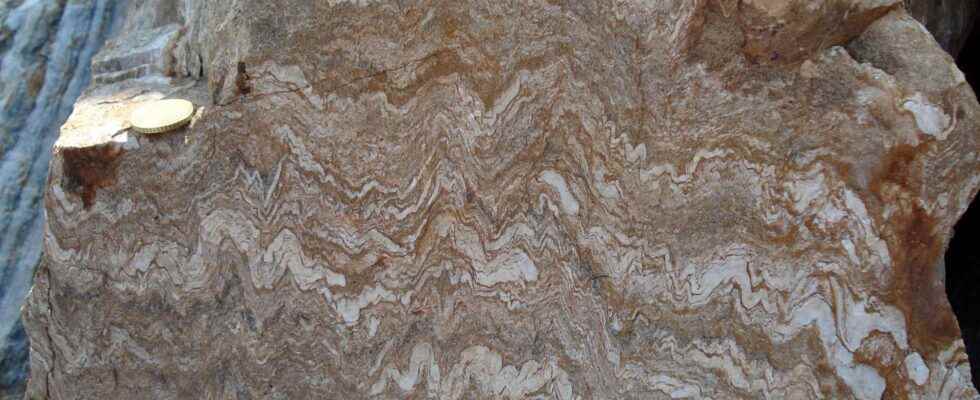The gneiss is a metamorphic rock composing the continental crust. It mainly contains quartz, micas, feldspars plagioclases and sometimes alkaline feldspars. The color of the rock is variable, but often gray.
Gneiss is also characterized by the presence of foliation, which gives the rock a sheet structure. This foliation is observed by an alternation, sometimes not visible to theeye bare, fine clear beds composed of quartz, plagioclases and feldspars, and dark beds composed of minerals ferromagnesians (black micas and sometimes amphiboles).
A high pressure and high temperature metamorphic rock
The foliation indicates that the rock has undergone an episode of ductile strain at the same time as the metamorphic process: during the increase of the pressure and temperature, the original rock has been crushed or even stretched. The genesis of gneiss takes place in the amphibolitic or granulitic facies, at a temperature above 600 ° C and at a pressure of the order of 2 to 12 kbar.
the metamorphism represents a transformation of an initial rock (protolith) subjected to conditions of pressure and temperature which make it unstable. Gneiss thus results from the metamorphism of an ancient igneous rock such as granite where the basalt, or some sedimentary rocks (marls, sandstone). There is thus a wide variety of gneisses, which differ in their mineralogical composition, their structure and their genesis.
A wide variety of gneiss
We can thus differentiate between gneisses according to their structure: homogeneous gneisses whose bedding is not visible to the naked eye, bedded gneisses whose bedding is visible to the naked eye or banded gneisses whose bedding is regular and may have as origin a sedimentary stratification. The folded gneisses show a compressive deformation during the process of metamorphism.
Some gneisses have inclusions of phenocrysts of feldspars or quartz, which form eyes in almond, oriented in the direction of the mica beds. We then speak of eyed gneiss. They often result from the crushing of old granites, under conditions of high pressure and temperature. The nature of these eyes gives a lot of information about the origin of gneiss.
Amphibolitic gneisses are the result of the metamorphism of basalts. Some gneisses are distinguished by the presence of traces of an early fusion. These are the migmatitic gneisses, also called migmatites. This onset of partial melting is a phenomenon that occurs during a very high pressure and high temperature metamorphism (anatexia phenomenon), which occurs when the rock is buried more than 15 km deep.
Gneisses are found in cratonic regions (very old continental crust) as well as in mountain ranges whose crustal root has been exhumed by compressive tectonics, such as the Pyrenees, the Vosges or the Alps.
You will also be interested
Interested in what you just read?
.
fs12
